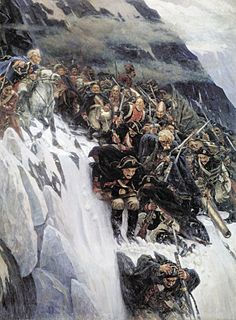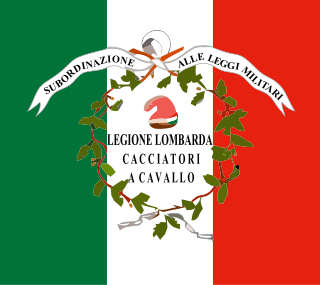 W
WThe Cisalpine Republic was a sister republic of France in Northern Italy that lasted from 1797 to 1802.
 W
WThe Consulte de Lyon or consulte de la république cisalpine was an extraordinary meeting in the former chapel of the Jesuit college of the Trinity in Lyon during the French Consulate. It was held from 11–26 January 1802 and converted the Cisalpine Republic into the Italian Republic, with Napoleon Bonaparte as its president.
 W
WThe Italian and Swiss expeditions of 1799 and 1800 were undertaken by a combined Austro-Russian army under overall command of the Russian General Alexander Suvorov against French forces in Piedmont, Lombardy and Switzerland as part of the Italian campaigns of the French Revolutionary Wars in general and the War of the Second Coalition in particular.
 W
WThe Italian campaigns of the French Revolutionary Wars (1792–1802) were a series of conflicts fought principally in Northern Italy between the French Revolutionary Army and a Coalition of Austria, Russia, Piedmont-Sardinia, and a number of other Italian states.
 W
WThe Lombard Legion was a military unit of the Cisalpine Republic which existed from 1796 until the Republic's fall in 1799. The Lombard Legion was the first Italian military department to equip itself, as a banner, with an Italian tricolor flag.
 W
WThe Treaty of Campo Formio was signed on 17 October 1797 by Napoleon Bonaparte and Count Philipp von Cobenzl as representatives of the French Republic and the Austrian monarchy, respectively. The treaty followed the armistice of Leoben, which had been forced on the Habsburgs by Napoleon's victorious campaign in Italy. It ended the War of the First Coalition and left Great Britain fighting alone against revolutionary France.
 W
WThe Treaty of Lunéville was signed in the Treaty House of Lunéville on 9 February 1801. The signatory parties were the French Republic and Holy Roman Emperor Francis II. The latter was negotiating both on his own behalf as ruler of the hereditary domains of the Habsburg Monarchy and on behalf of other rulers who controlled territories in the Holy Roman Empire. The signatories were Joseph Bonaparte and Count Ludwig von Cobenzl, the Austrian foreign minister.